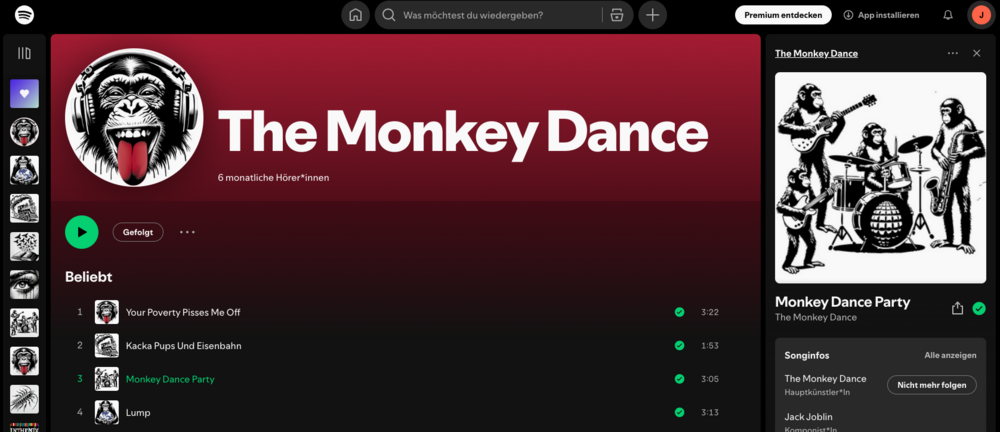Die Reihenfolge der folgenden Aufgaben ist an den Aufbau einer Textbeschreibung bzw. Interpretationangelehnt (Prüfungsaufgabe der Realschule).
Basisinfos
In welchem Jahr wurde Bob Dylan geboren? Am 24 Mai ... (1941) (!1951) (!1961) (!1971)
Nach wem benannte sich Bob Dylan (Dylan Thomas, Schriftsteller) (!Dylan Armstrong, Boxer) (!Dylan Baker, Schauspieler) (!Jakob Dylan, Musiker)

"Like a rolling stone" bezieht sich auf ein englische Sprichwort. Auf welches? (A rolling stone gathers no moss / Ein rollender Stein setzt kein Moos an) (!Like a Sisyphos / Wie ein Sisyphos) (!Rolling Stones play like shit / Beatles sind besser) (!Rolling in the deep / In die Tiefe rollen)
Wie lautet der Titel des Albums, das bei Columbia Records erschien? (Highway 61 Revisited) (!Blond on Blond) (!Desire) (!Before the flood)
In welchem Jahr erschien das Album? (20. Juli 1965) (!20. Juli 1955) (!20. Juli 1975) (!20. Juli 1985)
Zu welchem Genre wird der Song gezählt? (Folk-Rock) (!Hard Rock) (!Jazz) (!HipHop)
Um welche Textsorte handelt es sich? (Ballade) (!Ode) (!Fabel) (!Sonett)
Geraffte Inhaltswiedergabe / Kernsatz: das Thema bzw. den "Kerngedanken" in einem Satz (Der Song erzählt die Geschichte einer weiblichen Person, die aus reichem Hause kommt und auf der Straße landet.) (!Der Song geht um einen Boxer, dem ein Dreifachmord angehängt wird) (!Im Song verarbeitet Bob Dylan seine gescheiterte Liebe) (!Like a Rolling Stone ist ein Protestsong bzw. ein Antikriegssong.)
Sonstige Angaben
- Länge: 6:13
- Quelle Lyrics: BobDylan.com
- Quelle Basisinformationen: Song auf Wikipedia
...
Kreuzworträtsel: Lyrik Basisinfos
| Erstelle ein Kreuzworträtsel. Trage für "Frage" eine Aufgabe und für "Lösung" die Antwort ein. |
Um das Kreuzworträtsel zu füllen, drückst du mit der Maus auf ein Feld mit einer Zahl, dann erscheint ein Eingabedialog mit der Frage und der Eingabemöglichkeit.
| Siamese | ... cat |
| unknown | Like a complete |
| discover | Ain’t it hard when you ... that |
| conceal | You’re invisible now, you got no secrets to ... |
| compromise | You said you’d never ... |
...
Zuordnung der Strophen-Themen
| Erstelle ein Memory. Ersetze einfach die vorgegebenen Elemente. |
Dein Memory-Titel
Finde die Paare. Ordne die Strophen dem passenden Thema bzw. Text zu.
| Strophe 1 | Once upon a time |
| Strophe 2 | finest school |
| Strophe 3 | Siamese cat |
| Refrain | Frage, wie es sich anfühlt |
...
Fragen zum Inhalt
Inhalt: Was beschreibt das Gedicht? (Der Song beschreibt eine verwöhnte junge Frau, welche Obdachlosen auslachte, jetzt aber selbst auf der Straße ist. Im Refrain wird diese Protagonistin mit der Frage konfrontiert, wie es sich nun anfühle, alleine zu sein, heimatlos, unbekannt, eben wie jene "Herumtreiber", welche sie zuvor herablassend behandelt hat.) (!Obwohl das lyrische Ich in der ersten Strophe von unterschiedlichen Personen darum gebeten wird, die Besungene abzulehnen, erwidert dieser, dass er nicht geboren sei, um sie zu verlieren. Im Refrain beteuert er wiederholt, dass er sie will.) (!Der Song thematisiert die Verhaftung und Verurteilung einer Boxerin. Dylan verurteilt die Untersuchung des Falles und die darin vorkommenden rassistischen Akte.)
Erzähler: Wer spricht und woran erkennt man das? (Lyrisches Ich: Es wird aus der Sicht eines nicht weiter involvierten Menschen erzählt) (!Auktorialer, allwissender Erzähler: Der Erzähler ist wie Gott und berichtet deshalb von Gedanken und Gefühlen aller Beteiligten)
Formale Aspekte
Formale Aspekte der Lyrik: Welche Reimform ist in den ersten Zeilen der ersten Strophe zu finden? (a a a a b - c c c c b) (!a b a b c - a b a b c) (!a a b b - a a b b) (!a b b a - c d d c)
>> mehr formale Aspekte der Lyrik
Wie viele Strophen hat der Song? (4) (!3) (!8) (!7)
Background Info: Auf welches Fotomodel bezieht sich vermutlich diese Geschichte? (Edie Sedgwick) (!Claudia Schiffer) (!Linda Evangelista) (!Naomi Campbell)
Lösung: Fotomodel
Viele Dylan-Coverversionen machten auf die lyrische Qualität des Songtextes aufmerksam. Wer spielte keine Coverversion von "Like a Rolling Stone"? (!Jimi Hendrix) (!Rolling Stones) (!Bob Marley) (!Johnny Winter) (!Green Day) (!Wolfgang Niedecken) (!Wolfgang Ambros) (Wolfgang Amadeus Mozart)
Analyse
Löse diese Aufgaben im Diskussionsbereich:
- Formale Aspekte der Lyrik: Bestimme weitere formale Aspekte der Lyrik dieses Songs z.B. Gedichtform, Metrum / Versmaß, Versform, Reim, Kadenz, Enjambement.
- Sprachlich-stilistische Gestaltung: Finde Stilmittel, Auffälligkeiten, Stimmungen des lyrischen Ichs, Satzbau, Zeitform usw.
Vorbereitung der Interpretation
Löse diese Aufgaben im Diskussionsbereich:
- Zusammenspiel der sprachlich-stilistischen Mittel und dem Inhalt: Was bewirken die rhetorischen Stilmittel?
- How does it feel? Welche Gefühle werden durch den Songtext hervorgerufen?
Interpretation
Löse diese Aufgaben im Diskussionsbereich:
- Deutungsmöglichkeiten: Deute auffällige Textpassagen, passend Biographisches oder ordne den Songtext historische ein.
- Beschreibe die Intention des Textes bzw. den zentralen Gedanken.
- Mögliche Autorenintention: Was wollte Bob Dylan uns damit sagen?
- Aktualität, möglicher Transfer (zur eigenen Lebenswelt) oder offene Fragen.
- Persönliche Stellungnahme, z.B. stimmt der Inhalt mit eigenen Erfahrungen überein?
Interpretation: Einfluss und Vermächtnis von "Like a Rolling Stone"
"Like a Rolling Stone" von Bob Dylan hat einen unauslöschlichen Stempel auf die Geschichte der Popmusik hinterlassen und Generationen von Musikern und Songwritern beeinflusst. In diesem Abschnitt werden wir die verschiedenen Aspekte untersuchen, in denen das Lied die Musik beeinflusst hat, sowie sein fortwährendes Vermächtnis.
Einfluss auf die Musik
Bob Dylans "Like a Rolling Stone" gilt weithin als eines der wichtigsten und einflussreichsten Lieder des 20. Jahrhunderts. Seine innovative Verschmelzung von Folk und Rock brach Neuland und eröffnete anderen Künstlern die Möglichkeit, mit verschiedenen Genres und Stilen zu experimentieren. Die ausgedehnte Länge, die unkonventionelle Struktur und die mutigen Texte des Liedes stellten auch die Normen der damaligen Popmusik in Frage und zeigten, dass kommerziell erfolgreiche Lieder sowohl komplex als auch anspruchsvoll sein können.
Viele Musiker haben "Like a Rolling Stone" als eine Schlüsseleinfluss auf ihre Arbeit genannt. Zum Beispiel hat Bruce Springsteen das Hören des Liedes zum ersten Mal als eine transformative Erfahrung beschrieben und sagte: "Es war, als hätte jemand die Tür zu deinem Verstand aufgetreten." Andere Künstler wie The Beatles, The Rolling Stones und U2 haben ebenfalls den Einfluss des Liedes auf ihre eigene Musik anerkannt.
Die Umarmung elektrischer Instrumente und Rock-Sensibilitäten des Liedes spielte auch eine bedeutende Rolle in der Entwicklung des Folk-Rock als Genre und ebnete den Weg für Künstler wie The Byrds, Crosby, Stills, Nash & Young und Joni Mitchell, unter anderen.
Vermächtnis
"Like a Rolling Stone" wird weiterhin von Kritikern, Musikern und Fans gleichermaßen gefeiert und verehrt. Es wurde in zahlreiche "Best-of"-Listen und Rankings aufgenommen, einschließlich der Liste der "500 Greatest Songs of All Time" des Rolling Stone-Magazins, wo es den ersten Platz belegt.
Das Vermächtnis des Liedes reicht auch über den Bereich der Musik hinaus, da seine Themen der Entfremdung, Desillusionierung und Infragestellung der Autorität in verschiedenen kulturellen und politischen Kontexten weiterhin Anklang finden. "Like a Rolling Stone" bleibt ein kraftvolles und dauerhaftes Symbol für künstlerischen Widerstand und die rastlose Suche nach Bedeutung in einer sich ständig verändernden Welt.
In den letzten Jahren wurde "Like a Rolling Stone" von zahlreichen Künstlern gecovert, was seine anhaltende Relevanz und Attraktivität zeigt. Diese Cover erstrecken sich über ein breites Spektrum von Genres und Stilen und zeigen die Vielseitigkeit und zeitlose Qualität des Liedes.
Abschließend lässt sich der Einfluss und das Vermächtnis von "Like a Rolling Stone" nicht überschätzen. Sein bahnbrechender Ansatz beim Songwriting und seine Auswirkungen auf die Popmusik sind mehr als ein halbes Jahrhundert nach seiner Veröffentlichung weiterhin sp
Analyzing "Like a Rolling Stone"
"Like a Rolling Stone," written and performed by Bob Dylan, is a groundbreaking song that reshaped the landscape of popular music in the 1960s. The song's powerful lyrics and innovative musical arrangement have inspired countless musicians and remain influential to this day. In this analysis, we will delve into the various aspects of the song, including its lyrics, music, and cultural significance.
Lyrics
The lyrics of "Like a Rolling Stone" are rich with imagery and metaphor, painting a vivid picture of a person who has fallen from a position of privilege and power. The song's protagonist, once "queen of the social scene," finds herself cast out and forced to experience the harsh realities of life.
The song's chorus – "How does it feel / To be on your own / With no direction home / A complete unknown / Like a rolling stone?" – underscores the themes of alienation and dislocation. The image of a "rolling stone" evokes a sense of aimlessness and perpetual movement, with no fixed destination or sense of belonging. This metaphor can be interpreted in various ways: as a commentary on the fickleness of fame and fortune, as an expression of the disillusionment and unrest prevalent in the 1960s, or as a more universal exploration of the human condition.
Throughout the song, Dylan employs biting sarcasm and cutting language to convey the protagonist's fall from grace. Lines such as "You used to laugh about / Everybody that was hangin' out" and "You used to be so amused / At Napoleon in rags and the language that he used" highlight the protagonist's previous sense of superiority and detachment, making her current situation all the more poignant.
Music
"Like a Rolling Stone" marked a significant departure from Dylan's earlier folk music, embracing a more electrified rock sound. The song's innovative arrangement features driving drums, a pulsating bass line, and the iconic organ riff played by Al Kooper. This combination of instruments creates a sense of urgency and momentum that propels the song forward, mirroring the protagonist's own disorientation and search for meaning.
The song's structure is also notable, with its extended length (over six minutes) and unconventional verse-chorus pattern. This departure from traditional pop song formats was groundbreaking at the time and contributed to the song's lasting impact.
Cultural Significance
"Like a Rolling Stone" was released in 1965, a time of immense social and political upheaval in the United States and around the world. The song's themes of disillusionment and questioning authority resonated with the countercultural movement that was gaining momentum at the time. The song is often seen as a reflection of the broader societal transformations that were taking place, as well as an expression of Dylan's own artistic evolution.
In addition to its cultural significance, "Like a Rolling Stone" has had a lasting impact on popular music. The song's innovative fusion of folk and rock, along with its unconventional structure and bold lyrics, inspired countless musicians and paved the way for new genres and styles. "Like a Rolling Stone" remains a touchstone for artists seeking to push boundaries and explore new creative territory.
In conclusion, "Like a Rolling Stone" is a complex and multifaceted work of art that defies easy categorization. Its powerful lyrics, innovative musical arrangement, and cultural resonance combine to create a song that has had a lasting impact on popular music and continues to inspire listeners and musicians alike.
MORE: Influence and Legacy of "Like a Rolling Stone"
"Like a Rolling Stone" has left an indelible mark on the history of popular music and has influenced generations of musicians and songwriters. In this section, we will explore the various ways in which the song has impacted music, as well as its continuing legacy.
Influence on Music
Bob Dylan's "Like a Rolling Stone" is widely considered one of the most important and influential songs of the 20th century. Its innovative fusion of folk and rock broke new ground and opened up possibilities for other artists to experiment with different genres and styles. The song's extended length, unconventional structure, and bold lyrics also challenged the norms of popular music at the time and demonstrated that commercially successful songs could be both complex and thought-provoking.
Many musicians have cited "Like a Rolling Stone" as a key influence on their work. For example, Bruce Springsteen has described hearing the song for the first time as a transformative experience, saying, "It was like somebody kicked open the door to your mind." Other artists, such as The Beatles, The Rolling Stones, and U2, have also acknowledged the song's impact on their own music.
The song's embrace of electric instruments and rock sensibilities also played a significant role in the evolution of folk-rock as a genre, paving the way for artists such as The Byrds, Crosby, Stills, Nash & Young, and Joni Mitchell, among others.
Legacy
"Like a Rolling Stone" continues to be celebrated and revered by critics, musicians, and fans alike. It has been included in numerous "best of" lists and rankings, including Rolling Stone magazine's list of "The 500 Greatest Songs of All Time," where it holds the number one spot.
The song's legacy also extends beyond the realm of music, as its themes of alienation, disillusionment, and questioning authority have continued to resonate with audiences in various cultural and political contexts. "Like a Rolling Stone" remains a powerful and enduring symbol of artistic defiance and the restless search for meaning in an ever-changing world.
In more recent years, "Like a Rolling Stone" has been covered by numerous artists, demonstrating its ongoing relevance and appeal. These covers span a wide range of genres and styles, showcasing the song's versatility and timeless quality.
In conclusion, the influence and legacy of "Like a Rolling Stone" cannot be overstated. Its groundbreaking approach to songwriting and its impact on popular music continue to be felt more than half a century after its release. The song remains a testament to the power of music to challenge conventions, inspire creativity, and capture the spirit of an era.
Teilen
Schulfach+


aiMOOCs



aiMOOC Projekte


YouTube Music: THE MONKEY DANCE

Spotify: THE MONKEY DANCE

Apple Music: THE MONKEY DANCE

Amazon Music: THE MONKEY DANCE

The Monkey Dance SpreadShirtShop

|
|
|


Children for a better world >> Förderung der AI Fair-Image Challenge
Fair-Image wird von CHILDREN JUGEND HILFT! gefördert und ist mit der deutschlandweiten AI Fair-Image Challenge SIEGERPROJEKT 2025. Alle Infos zur Challenge hier >>. Infos zum Camp25 gibt es hier. Wenn auch Ihr Euch ehrenamtlich engagiert und noch finanzielle Unterstützung für Eurer Projekt braucht, dann stellt gerne einen Antrag bei JUGEND HILFT.












































